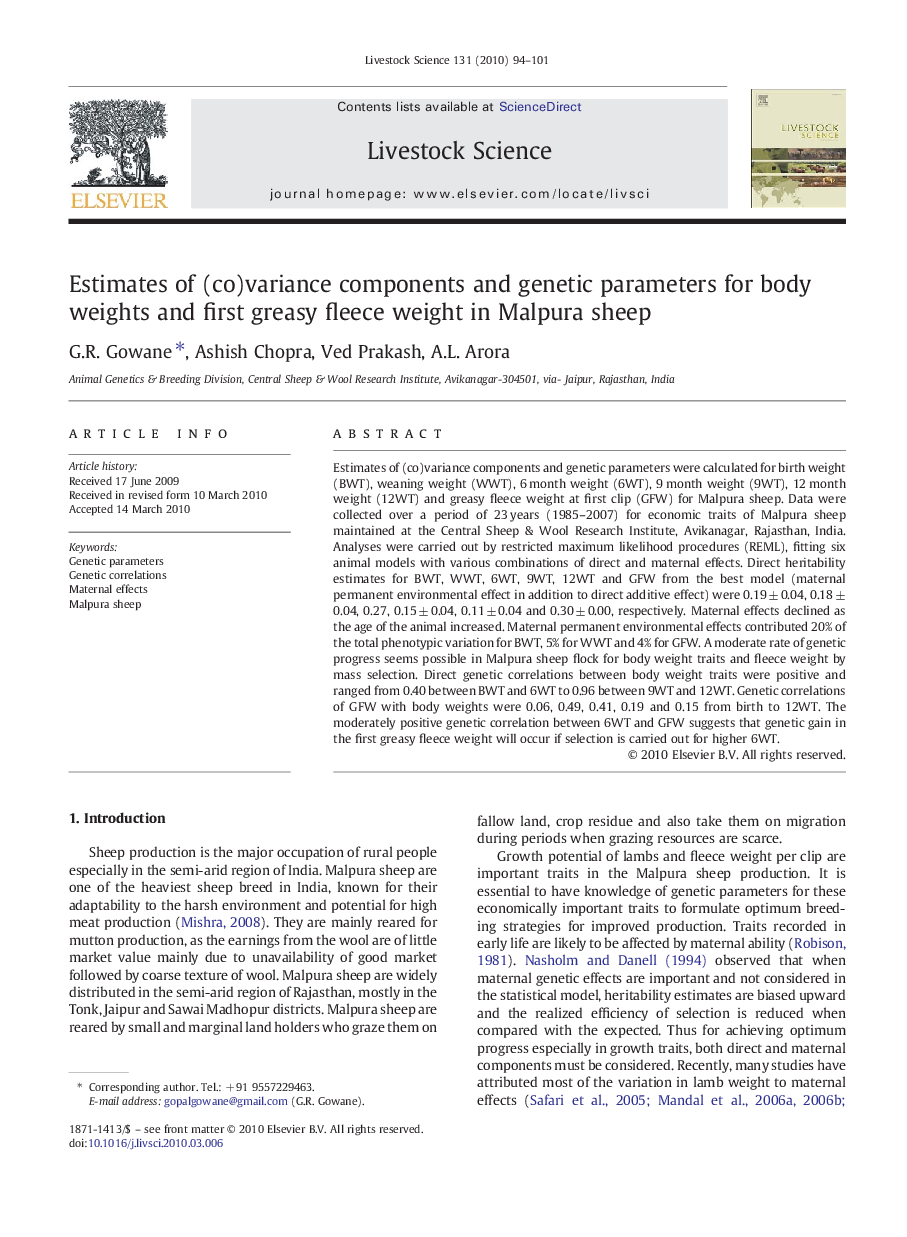| Article ID | Journal | Published Year | Pages | File Type |
|---|---|---|---|---|
| 2447850 | Livestock Science | 2010 | 8 Pages |
Estimates of (co)variance components and genetic parameters were calculated for birth weight (BWT), weaning weight (WWT), 6 month weight (6WT), 9 month weight (9WT), 12 month weight (12WT) and greasy fleece weight at first clip (GFW) for Malpura sheep. Data were collected over a period of 23 years (1985–2007) for economic traits of Malpura sheep maintained at the Central Sheep & Wool Research Institute, Avikanagar, Rajasthan, India. Analyses were carried out by restricted maximum likelihood procedures (REML), fitting six animal models with various combinations of direct and maternal effects. Direct heritability estimates for BWT, WWT, 6WT, 9WT, 12WT and GFW from the best model (maternal permanent environmental effect in addition to direct additive effect) were 0.19 ± 0.04, 0.18 ± 0.04, 0.27, 0.15 ± 0.04, 0.11 ± 0.04 and 0.30 ± 0.00, respectively. Maternal effects declined as the age of the animal increased. Maternal permanent environmental effects contributed 20% of the total phenotypic variation for BWT, 5% for WWT and 4% for GFW. A moderate rate of genetic progress seems possible in Malpura sheep flock for body weight traits and fleece weight by mass selection. Direct genetic correlations between body weight traits were positive and ranged from 0.40 between BWT and 6WT to 0.96 between 9WT and 12WT. Genetic correlations of GFW with body weights were 0.06, 0.49, 0.41, 0.19 and 0.15 from birth to 12WT. The moderately positive genetic correlation between 6WT and GFW suggests that genetic gain in the first greasy fleece weight will occur if selection is carried out for higher 6WT.
